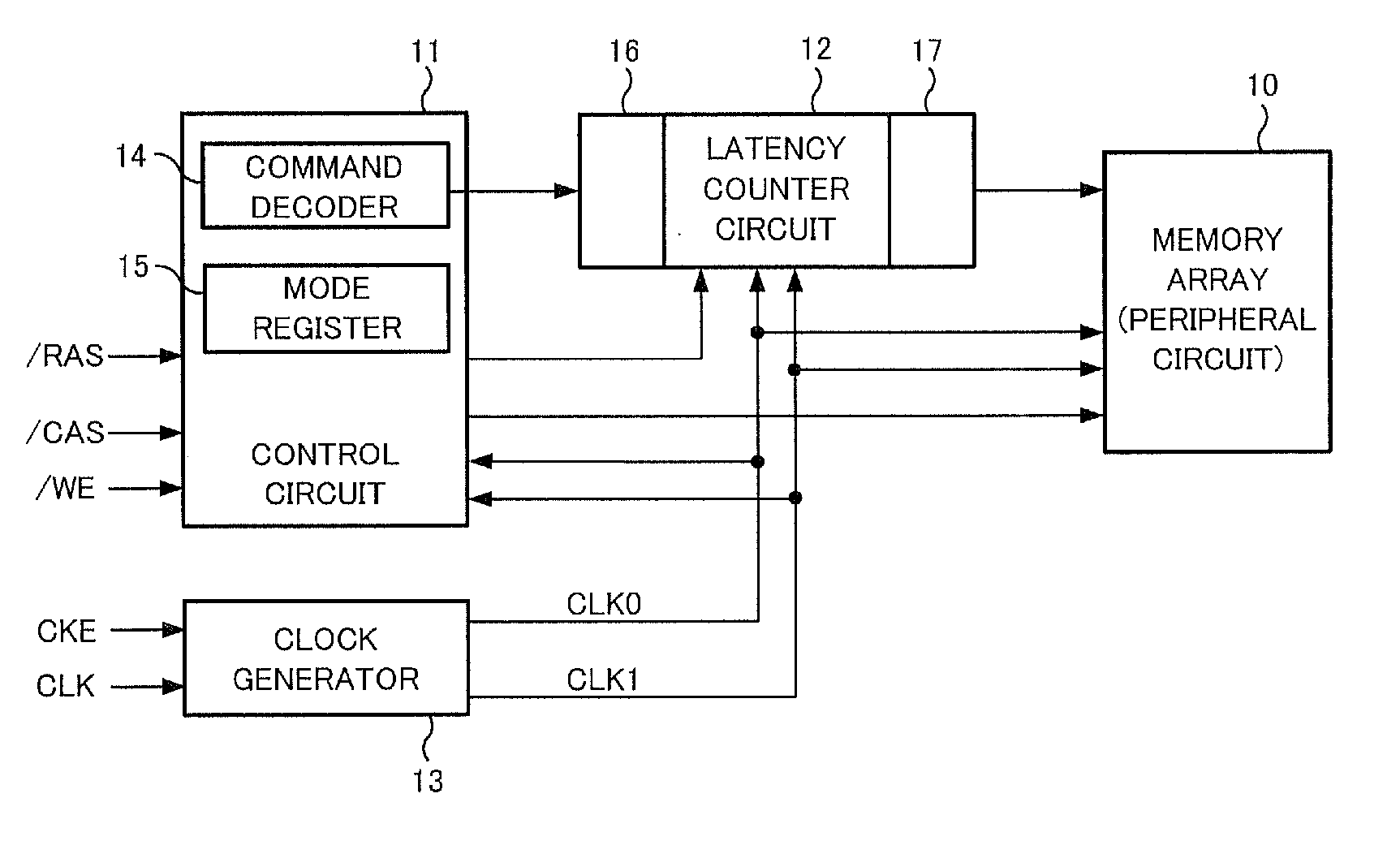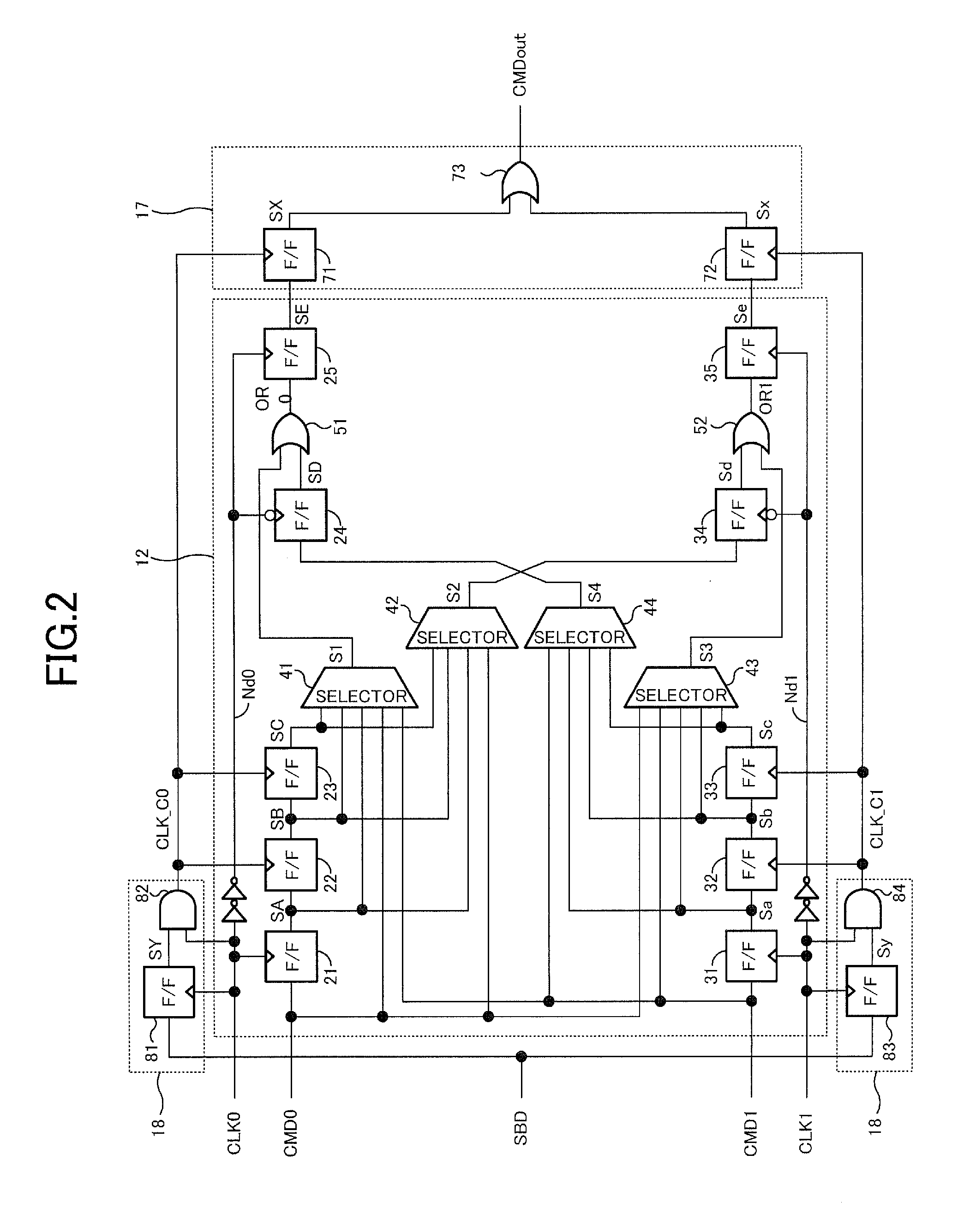Semiconductor device having latency counter
a technology of a semiconductor device and a latch circuit, which is applied in the direction of information storage, static storage, digital storage, etc., can solve the problems of limiting consumption current, increasing consumption current becomes a problem, etc., and achieves the reduction of the overall consumption current in the latch circuit, ensuring the sufficient margin for counting operation, and reducing the effect of consumption curren
- Summary
- Abstract
- Description
- Claims
- Application Information
AI Technical Summary
Benefits of technology
Problems solved by technology
Method used
Image
Examples
first embodiment
[0031]FIG. 1 is a block diagram showing a principal configuration of a synchronous semiconductor memory device of a first embodiment. The synchronous semiconductor memory device as shown in FIG. 1 includes a memory array 10, a control circuit 11, a latency counter circuit 12 and a clock generator 13. Further, there are provided a command decoder 14 and a mode register 15 which are included in the control circuit 11, and there are also provided an input command latch circuit 16 and an output command latch circuit 17 which are attached to the latency counter circuit 12. Actually the synchronous semiconductor memory device includes many other components, but only components related to the function based on the present invention are shown in FIG. 1.
[0032]In the above-mentioned configuration, the memory array 10 includes a plurality of memory cells formed at intersections of a plurality of word lines and a plurality of bit lines arranged in a matrix, and a read / write operation is perform...
second embodiment
[0064]Next, a synchronous semiconductor memory device of a second embodiment will be described. A principal configuration of the synchronous semiconductor memory device of the second embodiment is common to the block diagram of FIG. 1, so description thereof is omitted. In the second embodiment, configurations of the latency counter circuit 12 and the clock control circuits 18 in FIG. 2 are changed, and they will be represented as a latency counter circuit 12a and clock control circuits 18a below.
[0065]FIG. 8 shows a configuration example of an area including the latency counter circuit 12a, the output command latch circuit 17 and the clock control circuits 18a. The latency counter circuit 12a shown in FIG. 8 can count nine steps of latencies 3 to 11 arbitrarily within the range from the minimum latency 3 to the maximum latency 11, in the same manner as the first embodiment. Here, the input command latch circuit 16 of the second embodiment has the same configuration as in FIG. 3 of ...
PUM
 Login to View More
Login to View More Abstract
Description
Claims
Application Information
 Login to View More
Login to View More - R&D
- Intellectual Property
- Life Sciences
- Materials
- Tech Scout
- Unparalleled Data Quality
- Higher Quality Content
- 60% Fewer Hallucinations
Browse by: Latest US Patents, China's latest patents, Technical Efficacy Thesaurus, Application Domain, Technology Topic, Popular Technical Reports.
© 2025 PatSnap. All rights reserved.Legal|Privacy policy|Modern Slavery Act Transparency Statement|Sitemap|About US| Contact US: help@patsnap.com



